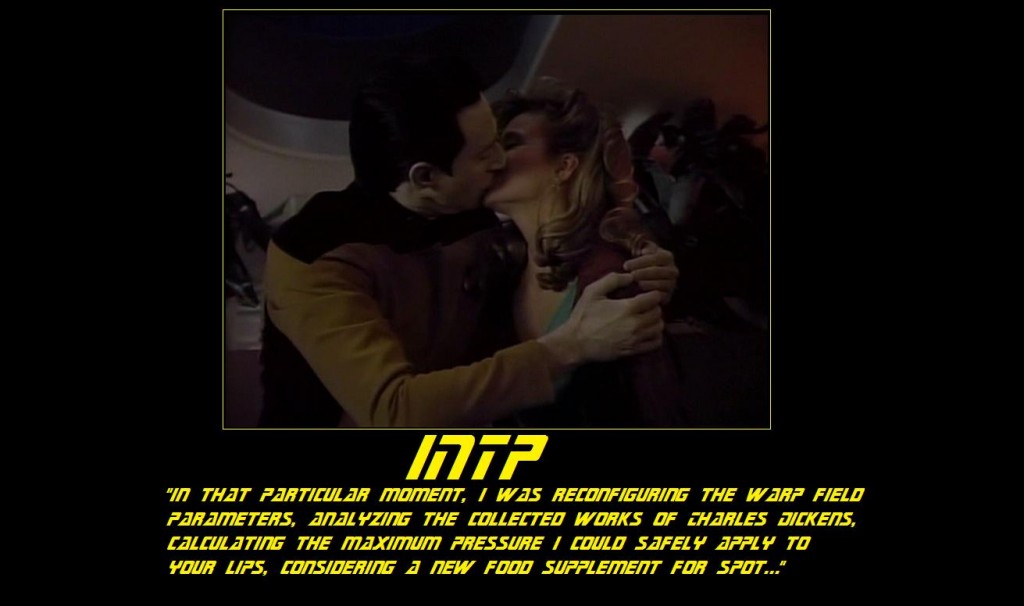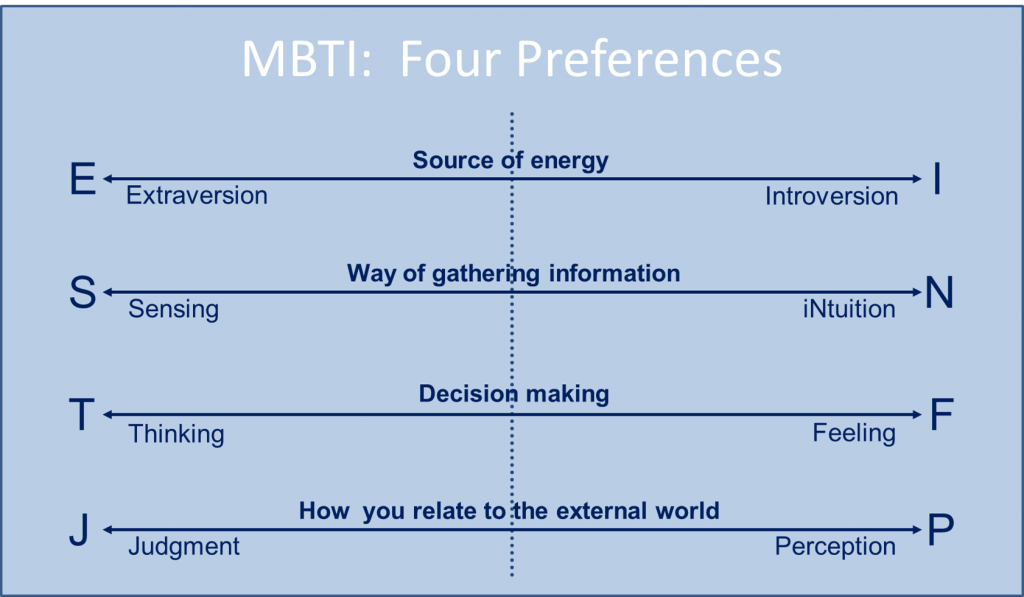
I take the Myers-Briggs Type Indicator
I first took the MBTI in 2002, at the start of Jerry Weinberg’s transformative Problem Solving Leadership Workshop. Having filled out a paper multiple-choice questionnaire, I self-scored it. I ended up with the four letters of my MBTI “type”.
Haven’t taken the test? I should explain that the MBTI looks at eight “personality preferences” organized into four opposite pairs. Everyone who takes the assessment ends up with one of the 16 possible combinations of the four pairs.
But, what is rarely emphasized is that the scores also provide information on the strength of the preference towards one or other opposites of each pair.
In my case, the assessment told me that I was a strong NF (intuitive feeler preference) and weak on the introversion-extroversion and judgment-perception axes. For what it’s worth, I’ve taken the MBTI multiple times since, and these results have stayed consistent, apart from a slight drift from weak introvert to weak extrovert over the years.
One way of looking at the MBTI preferences is to group them into temperament pairs (SJ guardians, SP artisans, NF idealists, and NT rationals). Strong NFs are “catalysts, spokespeople, energizers“, they “persuade people about values and inspirations“, to do their best work they need “personal meaning and congruence with who they are“, they are acknowledged for contributing “something unique or a special vision of possibilities“. [All quotes taken from “Introduction to Type in Organizations“, Krebs Hirsh et al.]
Insights from my Myers-Briggs Type Indicator
Learning I was a strong NF gave me an important insight into my career path over the previous thirty years. I started as an elementary particle physicist, gave up academia to form a solar manufacturing business, and then taught computer science and consulted on information technology issues until my mid 50’s. The whole time I felt a need to organize and run conferences around these topics, and I didn’t understand why.
Suddenly the arc of my professional life made sense. I had been continuously moving away from the T-focused (Thinking) work that I was good at. I’d been moving towards the people-oriented/inspirational/consensus-seeking work I strongly preferred. My thirty years of organizing conferences had been about facilitating connections between people. This was a preference of mine that I had always been drawn to but never acknowledged.
Jerry’s workshop started me on a more conscious journey. That journey led to my decision to retire from information technology consulting and write a book about what I had learned about designing, organizing, and facilitating participant-driven conferences.
And here I am.
Why I think the Myers-Briggs Type Indicator is useful
Perhaps the most common error made about the MBTI is to think that it’s about ability. If you misinterpret the assessment in this way it becomes limiting. “I can’t do that because I’m not the right type.” When you realize it’s a tool to explore preferences, these limits fall away. I can still use my thinking ability in everything I do. But knowing that my preferences and hence my mission are for NF-type activities helps me understand who I am and what I might want to do in the present and future.
There is a classic MBTI exercise that divides a group into four temperaments. Each temperament group then decides on and shares what their ideal organization would look like. Try it if you ever get the chance! Each group finds it easy to agree internally. Yet each group’s answer is so amusingly and utterly different from the others that it’s hard to maintain that the MBTI doesn’t provide at least some interesting insight into personal preferences.
I’m not a fan of MBTI as a management tool. (Not that I’ve had many opportunities to apply it that way.) But I do think it can provide useful personal insight. It did in my case, at any rate.
Thanks to Johnnie Moore for inspiring this post via his post on MBTI limitations!
INTP Motivational poster by Greg Davis
MBTI pairs image by Jan Dillis

